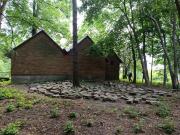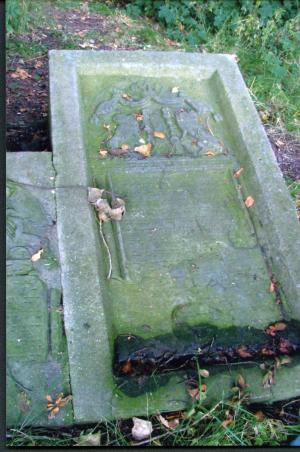Obj. ID: 13360
Jewish Funerary Art Jewish Cemetery in Przysucha, Poland

According to ESJF European Jewish Cemeteries Initiative, the cemetery was established in the first decades of the 18th century and the first records of its existence dates to 1723. In 1806, Awraham of Przysucha, one of the first founders of Hasidism in central Poland, was buried in the cemetery. In 1813, tzadik Jakow Icchak from Przysucha—the founder of the local Hasidic dynasty—was buried in the cemetery. In the following years, his family members were buried there as well. The cemetery was in use until World War II. In 1942, the bodies of people shot by the Germans—including 11 members of the Judenrat, and 19 people killed in the yard of the community board—were buried in mass graves. By order of the Germans, some tombstones were used to pave the streets and build a gendarmerie station. The cemetery fell into further disrepair in the post-war years.
On May 9, 1955, the Minister of Municipal Economy signed an order to close the cemetery. The attached documentation stated the following: “The area is 3 ha. […] The cemetery is completely devastated, the fence is missing, the tombstones have been destroyed by the Germans. The graves are razed to the ground, there are no trees or bushes in the cemetery. The last funeral took place in 1942.” The Presidium of the Communal National Council in Przysucha planned to arrange greenery at the cemetery. The area was later used as a school gymnasium. In the 1980s, at the initiative of Hasidic communities, two adjoining ohels were erected, and the cemetery was fenced. Currently, within the cemetery, there are several dozen-destroyed tombstones (most of which are about 20 x 20 cm), the oldest of which dates back to 1771. Only several tombstones are located in their original places. The area is covered with deciduous forest and dense undergrowth. The cemetery is owned by the Foundation for the Preservation of Jewish Heritage. The cemetery is listed in the Register of Immovable Monuments.
The first records of Jews in Przysucha dates to the beginning of the 18th century. The town was the seat of a Hasidic dynasty. In 1921, 2,153 Jews lived in Przysucha (66.5% of the population), most of whom were killed by the Germans in Treblinka in 1942.
There are two modern ohallim: a single brick ohel over the gravestone of Abraham from Przysucha (died in 1806) and a double brick ohel of the local tzadikim.
The cemetery is surrounded by a metal fence 2.5 m high. Fence repairs were carried out by ESJF in May 2023. One Standing tombstone, 3 lying and 50 fragments were located. The majority of the fragments have been returned to the cemetery area over the last few decades. Some fragments of tombstones from Przysucha cemetery are still embedded into the wall of the local Fire & Police station (photos are available at http://cmentarze-zydowskie.pl/przysucha.htm).








